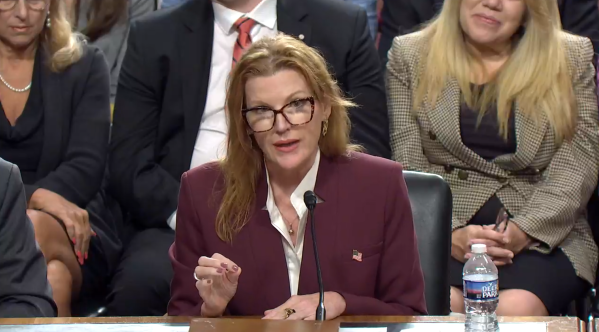Nominee for key Pentagon R&E post vows to accelerate prototyping, experimentation

President Donald Trump’s nominee to serve as assistant secretary of defense for mission capabilities told lawmakers Tuesday that, if confirmed, he will work to create a sustainable system that ensures innovative capabilities can be rapidly fielded to warfighters.
In July, James Caggy was tapped for the new position, which was created during the Biden administration but hasn’t been filled by a Senate-confirmed official. The ASD for mission capabilities is expected to serve as the principal staff advisor to the undersecretary of defense for research and engineering and primarily focus on accelerating the development and delivery of critical emerging technologies.
During his confirmation hearing with the Senate Armed Services Committee, Caggy emphasized that the Pentagon is currently burdened by outdated bureaucracy and regulations that often prevent robust prototyping and experimentation, as well as stifle innovation.
“It’s incredibly important that the mission capabilities offices works and partners with the [military] services, with laboratories — both in the services and [the Defense Advanced Research Projects Agency] — and works alongside the combatant commands to ensure that we can prototype, task, experiment and get validated warfighter feedback back to our industry partners, such that we can develop these capabilities at a much, much faster rate than we are doing today,” he told lawmakers.
While removing policies that inhibit new capability delivery has been an issue at the Pentagon for years, the problem has been a top concern among Secretary of Defense Pete Hegseth and other department leaders under the Trump administration. Since taking office, Hegseth has issued a number of directives that seek to reform and streamline acquisition processes.
In line with the administration’s focus, Caggy said that one of his main priorities as ASD would be to accelerate capability prototyping and delivery.
“Success in this area means we won’t just innovate in a lab. We will get technology into the field where it can make a difference for the men and women on the front lines,” he said. “I will push the department to remove bureaucratic roadblocks that slow down transitioning proven technologies to the joint force, so that warfighters receive state-of-the-art capabilities on timelines measured in months, not years.”
Caggy also pledged to increase the number of prototyping and experimentation exercises at the joint force level over the next year so that Pentagon officials can more quickly improve and iterate on new capabilities.
To do so, he emphasized the importance of building a “secure and sustainable” system, while also strengthening the department’s development pipelines and testing infrastructure.
“The metric I care about is speed with credibility: how quickly we can prove that a technology works and field it at scale,” Caggy wrote in his responses to advance policy questions from senators. “If confirmed, I’ll work to implement policy how we measure and how we can shorten both timelines, without compromising safety or effectiveness.”
Capabilities demonstrated through joint experimentation would be those considered critical technologies within the Pentagon that address mission gaps, he noted.
Caggy also promised to bolster the department’s partnerships with the emerging defense technology industry through events like the Technology Readiness Experimentation (T-REX) series and programs such as Accelerate the Procurement and Fielding of Innovative Technologies (APFIT).
Having worked both in the private sector and at the Pentagon’s Strategic Capabilities Office, he noted that ensuring non-traditional vendors and small businesses have access to experimentation campaigns would be one of his top priorities.






